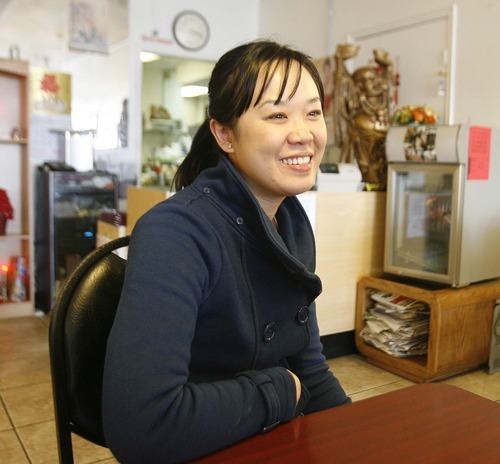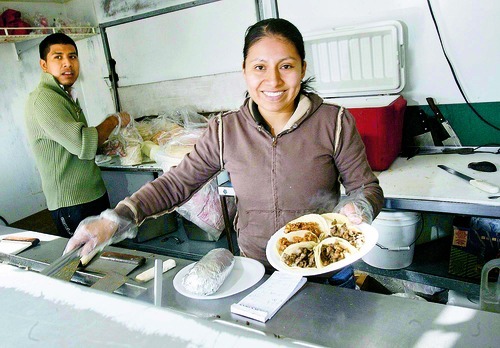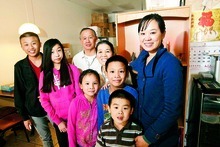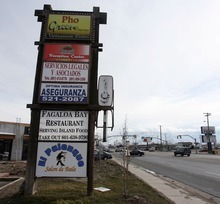This is an archived article that was published on sltrib.com in 2011, and information in the article may be outdated. It is provided only for personal research purposes and may not be reprinted.
Donny and Marie Osmond. Polygamists in frumpy dresses. Ranchers in cowboy hats. Skiers.
When the world looks at Utah, it can't help but picture a lily-white Western state filled mostly with Mormons. But the portrait brushed by the 2010 census frames a different reality — a much more colorful picture.
Besides the explosion in Latinos — who mushroomed 78 percent over the past decade and now make up 13 percent of Utah's total population — a growing number of diversity-rich cities rearrange the Beehive State's image.
A half-dozen are near the cusp of "majority minority" status, while two towns already are. Salt Lake City's western neighbor, West Valley City, is 45 percent minority, perched to likely become Utah's first major city to fly by that 50 percent threshold.
Home to African refugees, South Salt Lake tops 42 percent, including four times the state's 1 percent average of black residents. And the capital city itself is 33 percent minority, doubling the state's averages for blacks, Asians and Pacific Islanders. The closest to tipping over 50 percent is recently incorporated Bryce Canyon City (48 percent) — a tiny burg of 200 where nearly half the company town's seasonal workers are Asian or Latino.
Add Ogden (35 percent), Blanding (34 percent) and Wendover (71 percent) and the state's vanilla label could more aptly be dubbed a swirl.
—
West side tapestry •To get a look at West Valley City's diversity, go to the strip mall on Redwood Road just south of 3500 South.
My Tien offers Vietnamese and Chinese cuisines. El Jaripeo will satisfy a craving for Mexican food. Sweetz 'N Spicez has Pakistani and Indian groceries and spices, as well as a small restaurant.
"West Valley City is like the multicultural center of the Salt Lake Valley," Teresa Chau, of My Tien said. "There's a good mix in the area."
The family business mostly attracted Asians and Asian-Americans when it opened in 1995, but now draws many Latinos and whites, she said.
Maria Santiago said about half of the customers at her El Jaripeo food truck in the mall parking lot are not Latino. And Yousuf Khanani said Sweetz 'N Spicez never was intended to serve only southern Asians.
"It's amazing how we get so many people from different backgrounds," Khanani said.
In West Valley City, about 33 percent of the population is Hispanic, almost 5 percent Asian, 3.6 percent Pacific Islander, about 2 percent black, and 1.3 percent American Indian.
Mayor Mike Winder applauds the fact that children can go to school with kids from different backgrounds.
"Diversity brings wonderful opportunities," Winder said, "but also brings challenges."
The city launched a program earlier this year encouraging everyone to learn English, hoping to unite the community and help its residents be successful.
Kevin Fayles, a 20-year West Valley City resident who has lived in California and Hawaii, likes the mix. "I think the diversity enriches our community," he said.
Mai Nguyen, owner of Pho Green Papaya in West Valley City, came to the U.S. from Vietnam as a child. She has employees of seven ethnicities working at the restaurant, which draws both Asian and non-Asian diners.
"We feel like it's home," she said. "Everywhere you go, they don't look at you like you don't belong here."
—
Melting pots • At the Hser Ner Moo Community and Welcome Center in South Salt Lake, at least 95 percent of the regulars are African and Asian refugees. "It's really enriching because we get to see so much diversity," said program coordinator Josh Huffaker.
But the language barrier is real. "A lot of our kids are illiterate," said Raunde Everett, Hser Ner Moo's manager. "They're just starting to learn the language and they're thrown in the school system and expected to do well in their classes."
Hallways at Woodrow Wilson Elementary echo with 24 languages. Social services workers and city leaders are worried that federal funding for the center and refugee-rich subsidized apartment buildings will soon be slashed.
Steve Foote, South Salt Lake's government affairs specialist, notes small apartments crammed with eight to 10 people are common, given the city's relatively cheap housing stock. That places a burden on Parks and Recreation Department programs, he said.
"It seems like we have more of our fair share of these issues to deal with," Foote adds, "but we're not turning our back on them."
Forty miles north, a town built by immigrants and the railroad is now 35 percent minority. And Ogden still is learning to cope, according to Betty Sawyer, past president of Ogden's NAACP.
She said City Hall needs to do a better job of promoting housing, education and business development to the city's burgeoning minority community.
"We need to embrace that as a positive for our community and look for ways to mainstream people of color," Sawyer said.
Salt Lake City recruited 20,000 college kids to help make sure minority populations were counted during last summer's census. It paid off, according to Yolanda Francisco-Nez, the capital's coordinator for the Office of Diversity and Human Rights.
"It was pretty amazing how many people came forward," she said about the city's 33 percent. The ongoing charge, she said, is getting minority residents onto boards and commissions, into City Hall, and vocal across the neighborhoods.
"I wouldn't look at any of those higher numbers as challenges," she said, "but I would look at them as opportunities."
At the entrance to Bryce Canyon National Park, one of Utah's newest towns comprises three hotels and a handful of restaurants. Roughly half the residents — many living in RVs — are minorities, including Asians on a guest-worker program. The other half are Latino, according to Lance Syrett, general manager for the hotels.
"There's no local population to draw employees from," he said, calling Bryce Canyon City a "statistical anomaly." "We get the employees from anywhere we can get them."
Across the Salt Flats, Wendover has long been over the 50 percent minority mark. Mayor Mike Crawford said even though most Latino residents are second- or third-generation residents, they prefer Spanish to English. "Sometimes there is a communications barrier ... but it's not a hurdle," he said. "We've learned to adapt very well with it."
Indeed, Crawford said, Cinco de Mayo in Wendover is just as big as the Fourth of July.
Counting minorities
Overall minority percentages are calculated from each census subgroup — such as Asians, Latinos and Pacific Islanders — though those individual totals are self-identified and unscientific. The largest minority concentrations, some totaling 100 percent, come from the state's handful of American Indian pockets, where the reservation essentially constitutes the town.











